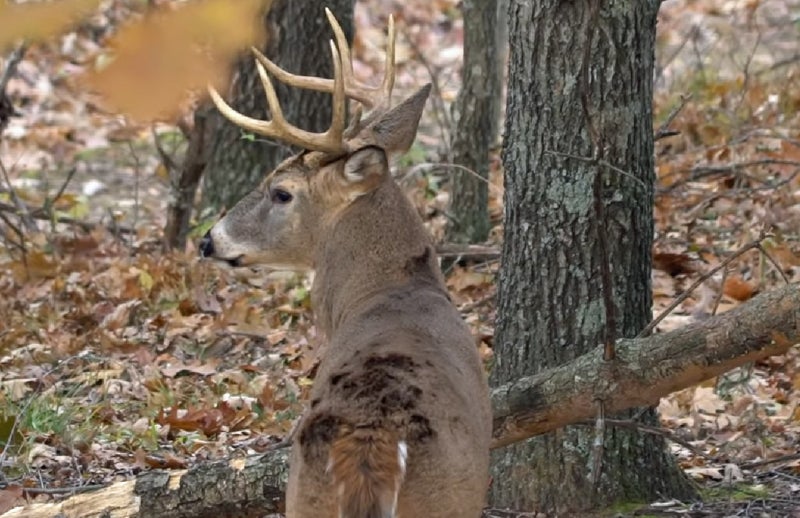Jeff Sturgis’s Top 5 Deer Hunting Myths
Russ Chastain 12.26.18

Hunting lore. There’s a never-ending fount of it springing forth from every hunter’s experience, which is readily shared among fellow hunters around the campfire, at the hunt club barn in the morning before a hunt, or online. But how much of it is really true? Well, Jeff Sturgis of Whitetail Habitat Solutions decided to make this video addressing what he calls the ‘Top 5 Deer Hunting Myths.’ You know… stuff that most hunters accept as gospel, but which really isn’t.
In my 36+ years of deer hunting experience I’ve learned a thing or two myself, so I’ll give my take on each of his points below.
1) You Shouldn’t Pee in the Woods
He says his experience has shown that deer ignore the smell of urine when he pees from his tree stand, and that he typically urinates in rut scrapes (especially mock scrapes) to get deer to accept and use them. So, says he, you don’t really need to carry around a bottle to pee into. Pee all you want, and deer won’t care.
I agree with him… to a point. I think you should be careful around any stand that is hunted regularly — especially if you are hunting mature deer. Anything unusual can alarm a wary old mature buck, and a concentration of ammonia aroma from days’ worth of pee seems to fit that bill.
2) The ‘Dry Doe’ Myth
You hear deer hunters talking about old “dry” does… that is, older does who are beyond breeding age and therefore should be killed to prevent them from competing with productive deer for food and cover. Jeff tells us that’s completely false, and that a well-respected biologist told him about an old doe who lived to be 22 years old, who had fawns every year of her life. In fact, the older a doe becomes, the better a mother she is.
But wait, you say… I see some does with fawns and others without any fawns. Surely the single does are dry and unable to conceive, right? Wrong. All it means is they don’t have fawns with them when you see them. Perhaps they weren’t bred while in season or their fawns were killed by coyotes, bears, or vehicles. Or their fawns could simply be elsewhere — especially during the rut, when mama takes a break from babying junior so she can enjoy some whitetail rut romance.
I’m entirely in agreement on this one. It’s fine to take does from well-managed herds, but don’t assume a doe without fawns is barren.
3) Bucks Always Bed Downwind of Does and Fawns
This one is so silly I’ve never given it any credence, and Jeff points out the fallacy of believing that bucks will reliably bed downwind of does & fawns. Instead, he says, they simply bed somewhat deeper into the woods than does & fawns. So if you’re hunting a food source like a food plot or ag field, expect the does to bed down near the food and the bucks to bed beyond the does, with the does between the bucks and the food.
Makes sense to me.
4) Dew Claws and Bucks
So you see a deep deer track with four marks… two from the main “toes” and two marks behind from the “dew claws.” That track could only have been made by a big mature buck, right? Wrong.
I heard this one growing up, and later learned that it’s just not true. All deer have dew claws and all deer can leave dew claw marks when the conditions are right. It’s a simple matter of biology. And to help us out, Jeff offers some tips on how to tell when a deer track really was made by a mature buck.
5) You Must Use Scent Control Products for a Successful Hunt
Instead of stressing yourself about scent control by wearing specialized costly clothing and using those special soaps and sprays, simply play the wind. I’m paraphrasing here because Jeff gets a little long-winded (see what I did there?) about it… but he’s absolutely correct. The only way to ensure you’re not smelled by a deer you’re hunting is to locate your stand in such a way that your scent can’t be detected by the deer you’re hunting — and never hunt that stand when the wind is wrong.
He does use scent-killing sprays — as do I — but that alone cannot eliminate all human scent, and a wary buck downwind will still be able to pick up on it.
Controlling sound, he says, is far more important than reducing your scent — and he’s one hundred percent correct.
Enjoy the video.
